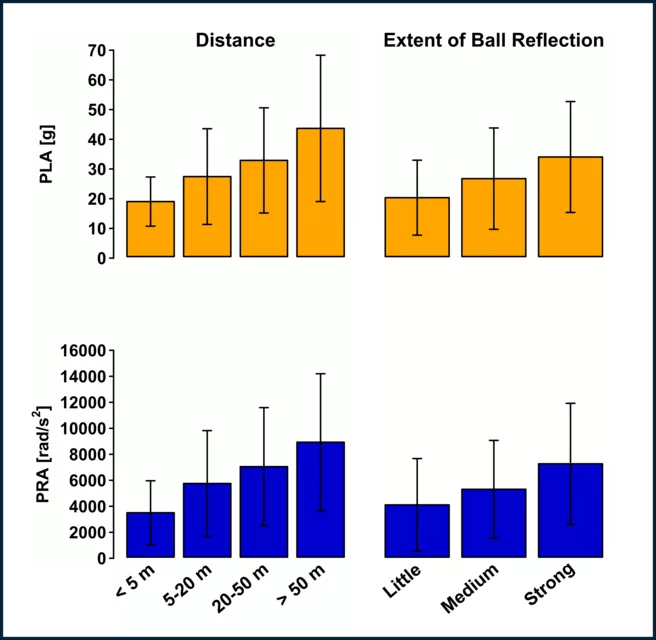Across 26 matches, 19 female soccer players were equipped with wearable sensors to record peak linear acceleration (PLA) and peak rotational acceleration (PRA) of the head during heading. Header events were verified by means of video analysis and further assigned to the following categories: Scenario, Distance, Player Movement, Ball Reflection, Impact Location, Duel, Jump. The influence of these and subject-specific factors on the PLA and PRA was analyzed using mixed linear models.
Analyses revealed that, above all, a greater travelling distance of the ball prior to heading and a stronger reflection of the ball during heading were associated with significantly increased head accelerations (both PLA and PRA). In addition, subject-specific factors, which may reflect differences in heading technique or anthropometric differences between individual players, also had a significant influence on PLA and PRA during headers.
Kern, J., Hermsdörfer, J. & Gulde, P. (2024). Factors Influencing Wearable-Derived Head Impact Kinematics in Soccer Heading. German Journal of Sports Medicine, 75(3). 105-112. https://doi.org/10.5960/dzsm.2024.598
